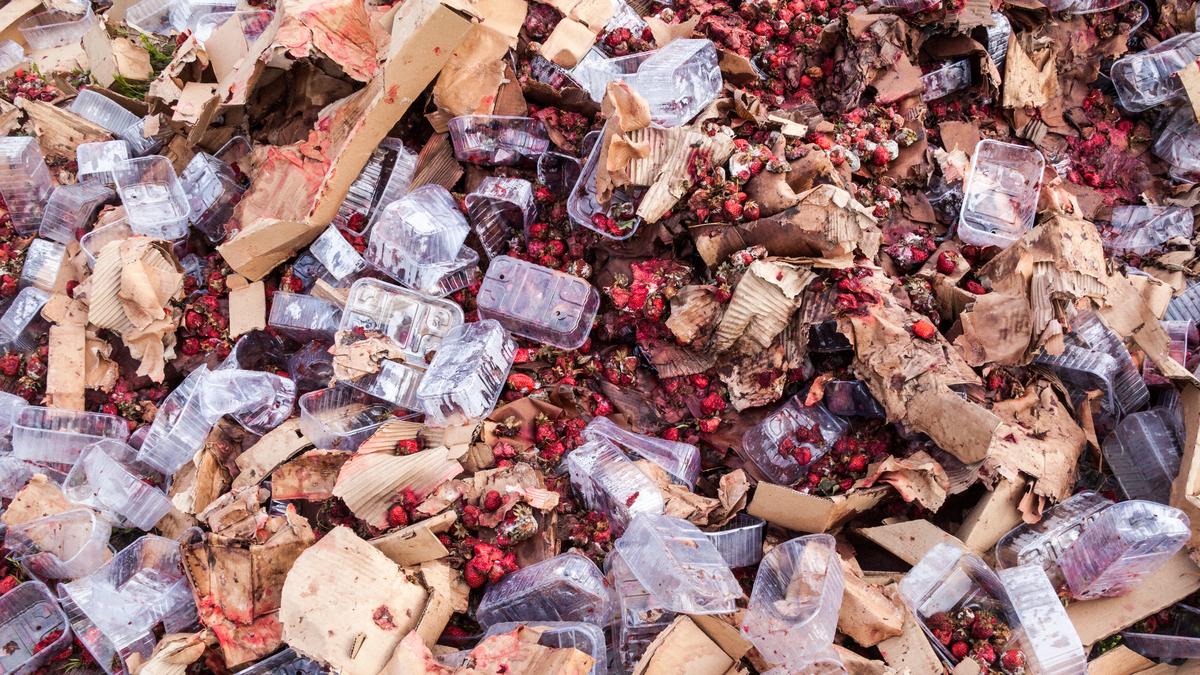On September 29, the world observes the International Day of Awareness of Food Loss and Waste (IDAFLW), which will draw attention to a silent crisis that undermines both food and climate security. Globally, nearly one-third of all food produced is either lost or wasted.
As one of the world’s largest food producers, India is not immune to this challenge, facing substantial post-harvest losses across multiple sectors. A study in 2022 by NABARD Consultancy Services (NABCONS) — a subsidiary of the National Bank for Agriculture and Rural Development (NABARD) — commissioned by the Ministry of Food Processing Industries (MoFPI), showed that such losses remain alarmingly high throughout the agricultural spectrum.
The economic toll is staggering. Post-harvest losses are estimated to cost India nearly ₹1.5 trillion annually — about 3.7% of agricultural GDP. Fruits and vegetables are the most vulnerable, with losses reaching 10%-15%, while even staples such as paddy (4.8%) and wheat (4.2%) experience significant wastage. Each tonne of food lost represents not only foregone nutrition but also wasted water, energy and labour — at a time when ecosystems are under pressure and the climate crisis is deepening. Scaled to India’s vast production volumes, these percentages amount to millions of tonnes of food lost every year, with serious consequences for farmer incomes, national food availability, environmental sustainability and climate stability.
Food loss impacts vary across crops, value chains and regions. Identifying where losses occur and quantifying their greenhouse gas (GHG) emissions is vital for targeted interventions. Addressing these inefficiencies is not only crucial for ensuring food security but also central to India’s climate commitments.
The climate connection
In response to this challenge, the Government of India has conducted three rounds of nationwide post-harvest surveys across more than 50 crops, generating valuable insights into value-chain losses at a global scale. The inclusion of Sustainable Development Goal (SDG) indicator 12.3.1 (Global Food Loss and Waste) in the National Indicator Framework further strengthens accountability by enabling systematic monitoring and alignment with international targets, while expanding the knowledge base for food systems transformation.
Building on this foundation, a recent collaborative study by the Food and Agriculture Organization of the United Nations (FAO) and the National Institute of Food Technology Entrepreneurship and Management (NIFTEM), with support from the Green Climate Fund (GCF), provides the first detailed sector-, state-, and operation-wise estimates of greenhouse gas (GHG) emissions from post-harvest loss and retail waste in India. The study covered 30 crops and livestock products.
The findings are striking. Even modest percentage losses in cereals, particularly paddy, translate into more than 10 million tonnes of carbon dioxide (CO2)-equivalent emissions annually, owing to the high methane intensity of rice. Losses of livestock products are equally damaging because of their heavy resource footprint. In total, food loss from these 30 commodities generates over 33 million tonnes of CO2-equivalent emissions each year — a preventable burden that could be reduced through more efficient and resilient food systems.
The study shows that in India, most losses occur early in the supply chain — during handling, processing, and distribution — unlike high-income countries where they are consumer-driven. This highlights India’s core challenge of gaps in infrastructure, limited technology use and fragmented supply chains.
Practical solutions
The scale of India’s food loss challenge is daunting, but solutions are well within reach. A multi-pronged approach that leverages technology, partnerships, private sector commitments, and a shift to a circular economy can drive real change.
Food loss largely stems from weak infrastructure. Strengthening cold chains, from pre-cooling to refrigerated transport and modern storage, is vital for perishables such as fruits, vegetables, dairy and meat. Programmes such as Pradhan Mantri Kisan SAMPADA Yojana (PMKSY) are already working to modernise this backbone of food logistics (SAMPADA is Scheme for Agro-Marine Processing and Development of Agro-Processing Clusters which was subsequently renamed PMKSY).
Alongside major infrastructure, affordable technologies are key. Solar cold storage, low-cost cooling chambers, crates for perishables and moisture-proof silos for grains can help smallholders cut spoilage significantly.
Digital tools such as IoT sensors and Artificial Intelligence (AI)-driven forecasting can improve storage, transport and distribution, removing bottlenecks and cutting losses. The FAO Food Loss App (FLAPP), launched in 2023, allows farmers, organisations and governments to track losses across the value chain. It is used in more than 30 countries.
At the retail end, surplus food can be redirected to food banks and community kitchens, while unavoidable waste can be converted into compost, feed, or bioenergy. Scaling these circular solutions requires strong policy support, including subsidies, credit guarantees and low-interest loans.
A shared responsibility
Food loss spans the entire supply chain, demanding shared responsibility. Governments must integrate loss reduction into climate strategies and invest in resilient infrastructure, while businesses adopt circular models and scale innovations. Civil society and academia can drive research and awareness, and consumers can cut waste through mindful choices and support for redistribution.
The observance of IDAFLW is more than symbolic. It is a call to action. The challenge is immense, but so is the reward. Saving food means saving the climate, conserving resources, and protecting livelihoods. An empty plate should symbolise a meal enjoyed, not resources squandered.
Takayuki Hagiwara is the Food and Agriculture Organization of the United Nations (FAO) Representative in India
Published – September 29, 2025 12:08 am IST

